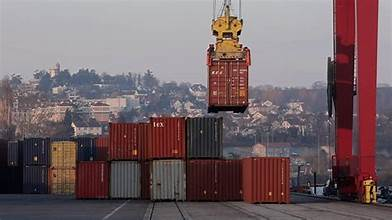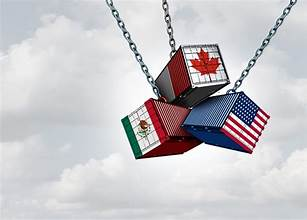In a major move that could escalate tensions between two of the world’s closest trading partners, Canada has imposed $20.7 billion in tariffs on a wide range of U.S. goods. The decision, announced by the Canadian Ministry of Finance, comes as a response to ongoing trade disputes and policy disagreements with the United States.
This bold step marks one of the largest trade actions taken by Canada against the U.S. in recent history. It affects hundreds of American products, from agricultural goods to industrial equipment, and is expected to have a ripple effect on both economies.
Why Did Canada Take This Step?
According to Canadian officials, the tariffs are a countermeasure against recent U.S. protectionist policies, especially increased duties on Canadian steel, aluminum, and agricultural exports. Canadian Finance Minister stated, “Canada will not stand idly by while unfair trade practices harm our economy and our workers.”

The $20.7 billion figure was carefully calculated to mirror the economic damage caused by U.S. tariffs. It also aims to pressure Washington into negotiations while protecting Canadian industries from further harm.
Canada’s decision follows months of diplomatic talks that failed to resolve trade disputes related to dairy quotas, softwood lumber, and Buy American policies that disadvantage Canadian suppliers.
What Goods Are Affected?
The tariffs will target a wide variety of U.S.-made goods including:
- Agricultural products like corn, soybeans, and apples
- Processed foods and beverages such as ketchup, orange juice, and whiskey
- Industrial machinery and building materials
- Consumer goods like washing machines and household appliances
This broad range is designed to hit key American exports in regions where political pressure could influence U.S. lawmakers to rethink their trade approach.
To view a full list of the affected products, visit the official Canadian government release here: Canada.ca – Tariff Measures Announcement
Impact on Consumers and Businesses
While the tariffs are meant to target U.S. producers, the real-world impact will be felt on both sides of the border. Canadian businesses that rely on American imports may see prices rise, while American exporters could face falling demand.

According to a report from The Financial Post, industries such as automotive parts, food manufacturing, and construction are expected to experience short-term disruptions in Canada. U.S. farmers and small manufacturers could see a decline in exports, especially those in midwestern states that rely heavily on cross-border trade.
Trade analysts predict that the average Canadian household could see a cost increase of up to $200 annually if the tariffs remain in place long-term.
U.S. Response and Next Steps
The U.S. government has responded with concern but has not yet announced any counter-retaliation. In a brief statement, the Office of the United States Trade Representative (USTR) said, “We are reviewing Canada’s actions and considering all available options to defend American interests.”
Experts believe that this move may push both countries back to the negotiating table. Trade policy researcher Laura Jenkins from Brookings Institution noted that “this level of economic retaliation is unusual between such tightly bound economies and could trigger a reset in trade discussions.”
There is also growing pressure on both governments from business leaders to resolve the issue quickly. The U.S. Chamber of Commerce and the Canadian Chamber of Commerce have issued a joint statement urging both nations to pursue diplomacy over escalation.
Historical Context of Canada-U.S. Trade Tensions
While Canada and the U.S. share one of the largest trading relationships in the world, their history is not without disputes. From the softwood lumber disagreement, which has spanned over two decades, to recent tensions around USMCA (United States-Mexico-Canada Agreement) enforcement, disagreements have flared periodically.
This $20.7 billion tariff package is one of the boldest retaliatory actions taken by Canada since the trade disputes during the Trump administration in 2018. Back then, both nations exchanged tariffs on steel, aluminum, and other goods until a resolution was reached a year later.
If unresolved, this new round of tariffs could disrupt the balance achieved under USMCA and damage mutual trust.
What This Means for Global Trade
Canada’s move sends a strong message to other U.S. trade partners who are also grappling with rising American tariffs and protectionist policies. Analysts suggest that this could encourage other allies to take similar actions or at least reevaluate their trade relationships with the United States.
Economists warn that escalating trade actions may slow global economic growth, especially at a time when supply chains are still recovering from the COVID-19 pandemic and geopolitical tensions remain high.
What Happens Next?
Canada has stated that it is open to dialogue, but insists that any negotiations must involve fair treatment of Canadian goods. With billions at stake and political pressure mounting on both sides, many hope that a resolution will be found through diplomatic channels rather than further trade battles.
As the situation unfolds, businesses, policymakers, and consumers will be closely watching for updates. One thing is clear: the era of smooth North American trade relations is facing a serious test.
Further Reading and Sources
- Canada’s Official Tariff Announcement – Government of Canada
- U.S. Chamber of Commerce Statement
- Brookings Institution – Trade Policy Insights
- Financial Post Trade Report
Also Read – New NAR Rules Are Shaking Up Real Estate Deals






